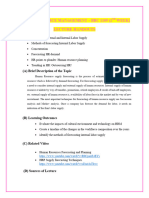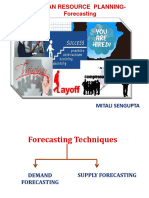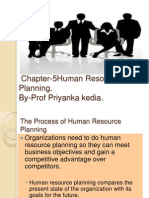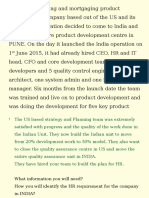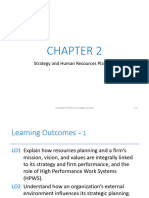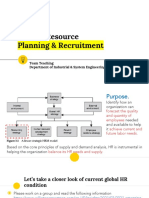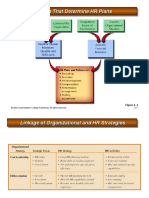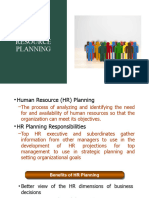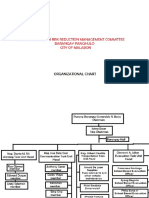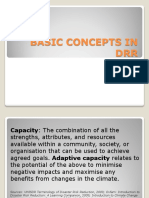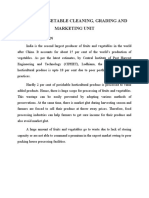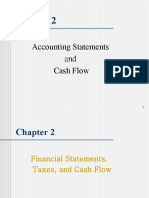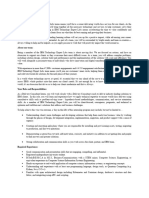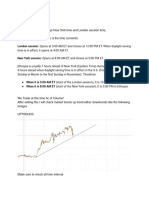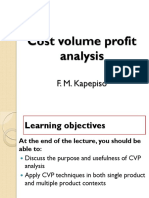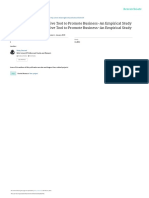100% found this document useful (1 vote)
84 views8 pagesHR Management: Labor Supply Forecasting
The document discusses human resource management and forecasting labor supply. It covers:
1) External factors that influence labor supply, such as availability of housing, education, and economic conditions.
2) Methods for forecasting internal labor supply, including succession analysis and Markov analysis to model employee movement within an organization.
3) Techniques for forecasting human resource demand, including managerial judgement, ratio-trend analysis, and regression analysis to quantify future staffing needs.
Uploaded by
Prof. Jomar MariquitCopyright
© © All Rights Reserved
We take content rights seriously. If you suspect this is your content, claim it here.
Available Formats
Download as DOCX, PDF, TXT or read online on Scribd
100% found this document useful (1 vote)
84 views8 pagesHR Management: Labor Supply Forecasting
The document discusses human resource management and forecasting labor supply. It covers:
1) External factors that influence labor supply, such as availability of housing, education, and economic conditions.
2) Methods for forecasting internal labor supply, including succession analysis and Markov analysis to model employee movement within an organization.
3) Techniques for forecasting human resource demand, including managerial judgement, ratio-trend analysis, and regression analysis to quantify future staffing needs.
Uploaded by
Prof. Jomar MariquitCopyright
© © All Rights Reserved
We take content rights seriously. If you suspect this is your content, claim it here.
Available Formats
Download as DOCX, PDF, TXT or read online on Scribd
/ 8



